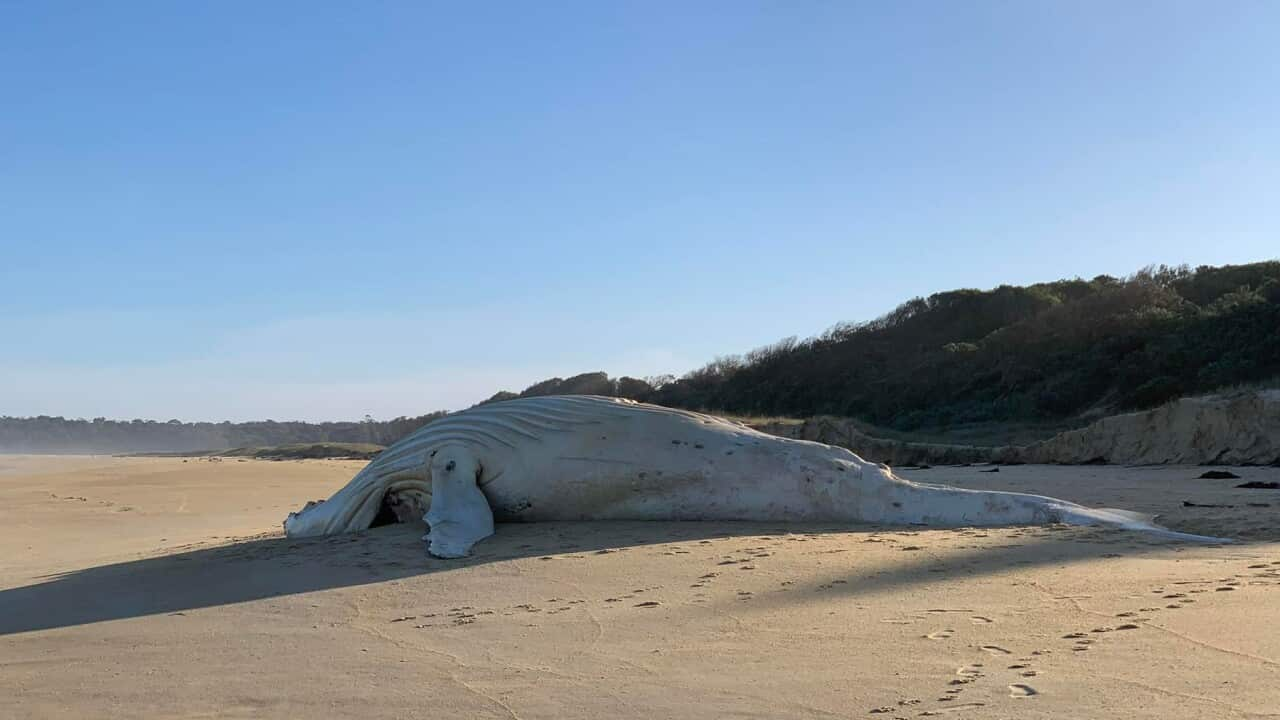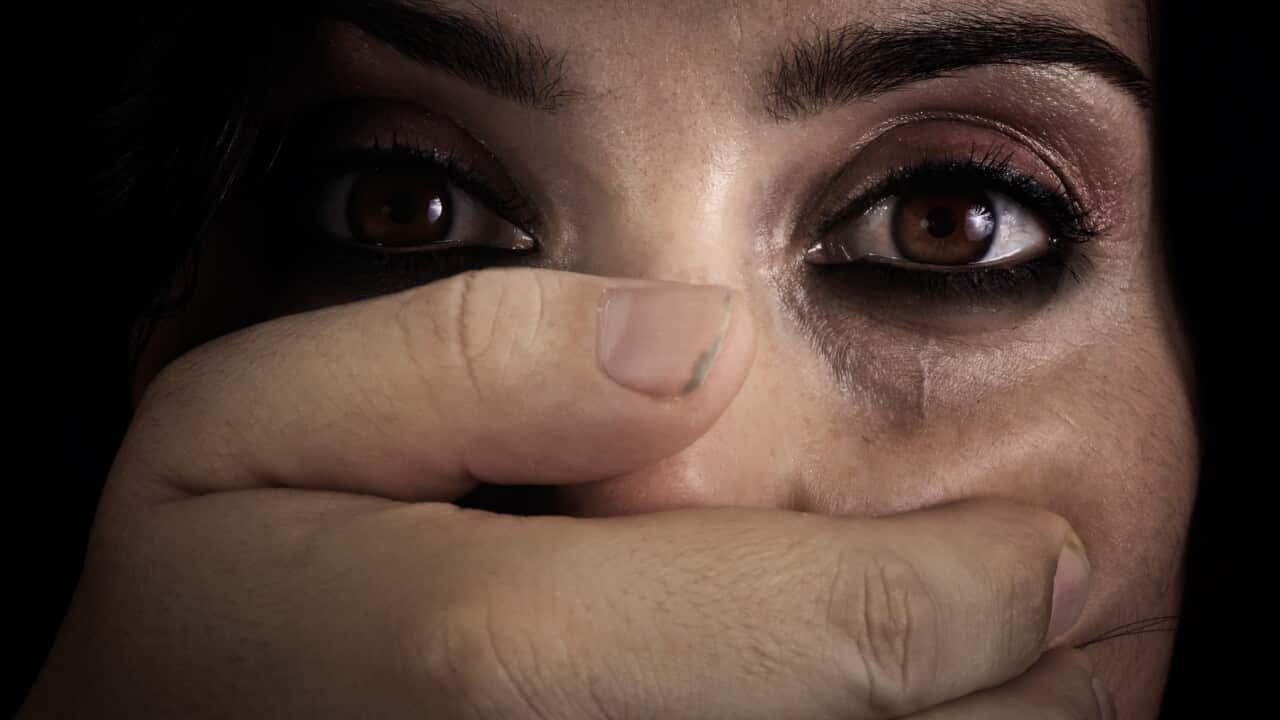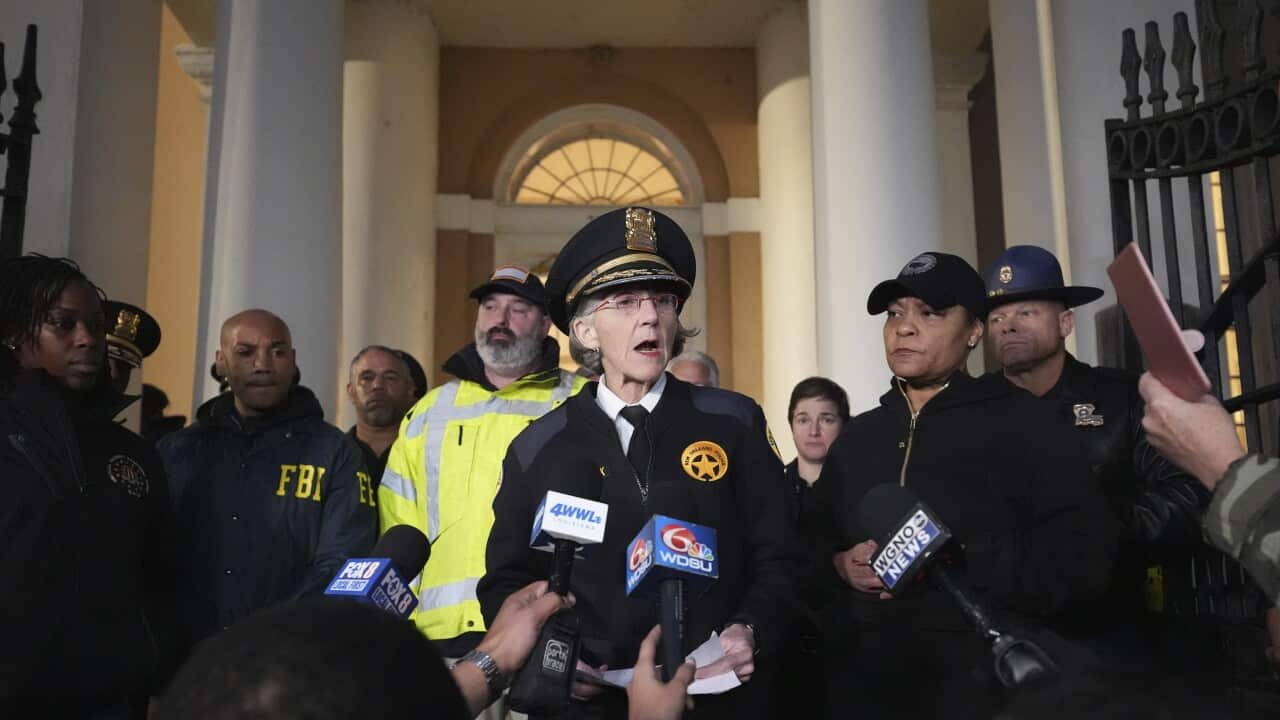Una grande e rara bellezza, spiaggiata sulle coste vicino a Mallacoota nel Victoria dell’Est.
La gente del posto ha avvistato per la prima volta la gigantesca megattera su una spiaggia selvaggia e remota sabato 16 luglio.
Devon Greetham, cittadino di Mallacoota, ha detto che queste cose non succedono di solito nella cittadina costiera.
"Went up and it was quite a large whale, and it was really white. A lot of people thought it had just been weathered, sort of out floating in the sea. But as we got closer you could see there was no real dark patches on it and it was just all sort of white. There's been a humpback years back, round at one of the other beaches, but yeah this is not really a regular occurrence here."
C’era la preoccupazione che la carcassa fosse quella della ben nota balena Migaloo, che è considerata l’unica megattera naturalmente bianca ancora in vita.
Migaloo – che si traduce in "amico bianco" in alcune lingue indigene, è stato avvistato per la prima volta a Bron Bay, nel New South Wales del nord, nel 1991.
Ma il dipartimento dell’ambiente del Victoria ha confermato che la creatura è una giovane femmina, mentre Migaloo è un maschio.
David Donnelly, del Dolphin Research Institute, ha detto che le condizioni della megattera indicano che probabilmente è morta in mare.
"The speculation from us would be that it's died at sea, due to ocean currents heavy winds and swell, its wound up on the beach
near Mallacoota. As for the cause of death it's a really difficult thing to determine even with good access to the carcass so it will be up to anybody who performs a necropsy on the animal to try and determine that."
David Donnelly ha detto che non ci sono prove al momento che il cambiamento climatico sia la causa della morte, ma è fondamentale registrare questi eventi per tracciare ogni cambiamento su un periodo più a lungo termine.
"Maybe then we can start to speculate what might be happening in the environment. But for the most part, the east coast Australian humpback whale population is very healthy, recovered very quickly and impressively and continues to grow. One animal on the beach won't make a difference to the population."
La posizione remota della spiaggia, raggiungibile soltanto via mare, rende molto difficile agli scienziati accedere alla carcassa per indagini approfondite.
Ma mentre la balena resta sulla spiaggia, Rodney Vile, del dipartimento ambiente, ammonisce che è un reato toccare o interferire con le balene, sia vive che morte.
"Currently we're planning to leave it in place and let it decompose naturally. That's our preferred approach. But it really depends with deceased whales the location of it and trading leaving it to decompose naturally versus human safety about where it's actually located. My advice is that they've decided to leave it in place and decompose naturally, so there are warnings out for people to avoid going near the whale or touching the whale."
Una squadra scientifica è attesa sul luogo per raccogliere campioni della carcassa – lunga 10 metri e pesante circa 22mila chilogrammi.
Oltre a determinare le cause della morte, gli scienziati vogliono chiarire se si tratta di una specie differente di balena bianca.
Le autorità hanno già determinato che ci sono cirripedi sulla gola della carcassa, che sembrano coprire la pelle che non è bianca.
Questo fatto ha fatto sorgere la domanda se questa fosse una vera balena albina.
La dottoressa Vanessa Pirotta, scienziata di fauna selvatica, ha detto che si è sentita sollevata dal fatto che la carcassa non sia quella di Migaloo – che non è stato avvistato negli ultimi due anni.
"Well any whale stranding, whether it be Migaloo or any other whale is a terrible thing to see. But there is some relief from myself and people all around the world that this is not Migaloo. But the question now is who is this and where is Migaloo?"
Vanessa Pirotta ha detto di sperare che Migaloo sia ancora in giro.
"So records show that he might pop anywhere. He could pop up in terms of Australian coastline or even across the ditch in New Zealand. So watch this space, his friend has just recently been seen. And when I refer to friend I mean a whale that has previously been swimming with Migaloo multiple times before.”
Nonostante la tragedia della morte, lo studio dei sistemi interni della balena gigante e delle loro caratteristiche, è destinato a fornire una nuova serie di conoscenze importanti per il mondo scientifico.
English
A grand and rare beauty, washed up on the shore near Mallacoota in far east Victoria .
Locals first spotted the giant humpback whale carcass on a wild and remote beach on Saturday 16 July.
Mallacoota resident, Devon Greetham, says it isn't a common occurrence for the coastal town.
"Went up and it was quite a large whale, and it was really white. A lot of people thought it had just been weathered, sort of out floating in the sea. But as we got closer you could see there was no real dark patches on it and it was just all sort of white. There's been a humpback years back, round at one of the other beaches, but yeah this is not really a regular occurrence here."
It was feared the carcass was the well-known whale Migaloo, who is believed to be the only pure white humpback alive today.
Migaloo - which translates to "white fella" in some Indigenous languages, was first sighted off Byron Bay in northern New South Wales in 1991.
But Victoria's environment department has confirmed the creature is a young female, while Migaloo is male.
David Donnelly from the Dolphin Research Institute says the humpback's condition indicates it probably died in the ocean.
"The speculation from us would be that it's died at sea, due to ocean currents heavy winds and swell, its wound up on the beach
near Mallacoota. As for the cause of death it's a really difficult thing to determine even with good access to the carcass so it will be up to anybody who performs a necropsy on the animal to try and determine that."
David Donnelly says there's no evidence so far that climate change was the cause of death, but that it's vital to record these events to track any changes over a longer period of time.
"Maybe then we can start to speculate what might be happening in the environment. But for the most part, the east coast Australian humpback whale population is very healthy, recovered very quickly and impressively and continues to grow. One animal on the beach won't make a difference to the population."
The remote location of the beach, only accessible by water, makes it very difficult for scientists to access the carcass for full investigation.
But while the whale remains onshore, the environment department's Rodney Vile is warning it's an offense for anyone to touch or interfere with whales, dead or alive.
"Currently we're planning to leave it in place and let it decompose naturally. That's our preferred approach. But it really depends with deceased whales the location of it and trading leaving it to decompose naturally versus human safety about where it's actually located. My advice is that they've decided to leave it in place and decompose naturally, so there are warnings out for people to avoid going near the whale or touching the whale."
A scientific team is expected to go out to collect samples from the carcass - which measures ten metres long and weighs about 22-thousand kilos .
As well as determining the cause of death, they aim to provide some clarity over whether or not it's a different white whale species.
Authorities have already determined that there are barnacles on the throat of the carcass, which appear to be covering skin that isn't white.
This has raised the question of whether it's a true albino whale.
Wildlife scientist Dr Vanessa Pirotta says she's felt relief that the carcass isn't Migaloo - who hasn't been seen in two years.
"Well any whale stranding, whether it be Migaloo or any other whale is a terrible thing to see. But there is some relief from myself and people all around the world that this is not Migaloo. But the question now is who is this and where is Migaloo?"
Vanessa Pirotta says she hopes that Migaloo is still out there.
"So records show that he might pop anywhere. He could pop up in terms of Australian coastline or even across the ditch in New Zealand. So watch this space, his friend has just recently been seen. And when I refer to friend I mean a whale that has previously been swimming with Migaloo multiple times before.”
As tragic as the death is, the study of the giant whale's internal systems and characteristics is set to provide a new array of knowledge welcomed by the science world.
Story by Massilia Ali and Catriona Stirrat




